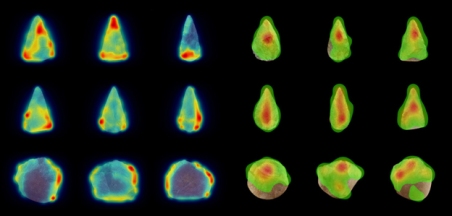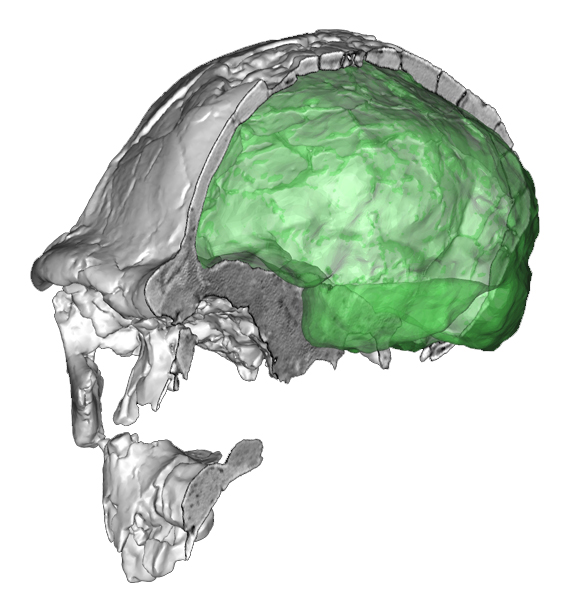 Investigating the perceptual relationships between body, brain and technology is crucial to understand the peculiar evolution of the human cognitive capacities. In this sense, attention is a key factor and, as primates, visual inputs are our first and more comprehensive sensorial cues to the outer world. After our first paper on eye-tracking and Paleolithic tools, this week we have published a study on visual attention and saliency with images of choppers and handaxes. The study includes one on-line experiment based on remote selection of features, and one eye-tracking experiment based on the detection of pupil behaviour. Images of choppers and handaxes trigger different patterns of visual exploration, in terms of dwell time and fixation counts, partially influenced by morphological dimensions. The knapped surface is more explored than the raw surface, and the tip (the functional region) is more explored than the base (the grasping region). Interestingly, these patterns of visual exploration are not associated with saliency maps, as defined according to the discontinuities in colour, geometry, and texture of the pictures. This study was part of a collaboration with Timothy Hodgson, at the Lincoln University. Here a post from his blog, with a nice video showing eye fixations on stone tools.
Investigating the perceptual relationships between body, brain and technology is crucial to understand the peculiar evolution of the human cognitive capacities. In this sense, attention is a key factor and, as primates, visual inputs are our first and more comprehensive sensorial cues to the outer world. After our first paper on eye-tracking and Paleolithic tools, this week we have published a study on visual attention and saliency with images of choppers and handaxes. The study includes one on-line experiment based on remote selection of features, and one eye-tracking experiment based on the detection of pupil behaviour. Images of choppers and handaxes trigger different patterns of visual exploration, in terms of dwell time and fixation counts, partially influenced by morphological dimensions. The knapped surface is more explored than the raw surface, and the tip (the functional region) is more explored than the base (the grasping region). Interestingly, these patterns of visual exploration are not associated with saliency maps, as defined according to the discontinuities in colour, geometry, and texture of the pictures. This study was part of a collaboration with Timothy Hodgson, at the Lincoln University. Here a post from his blog, with a nice video showing eye fixations on stone tools.
